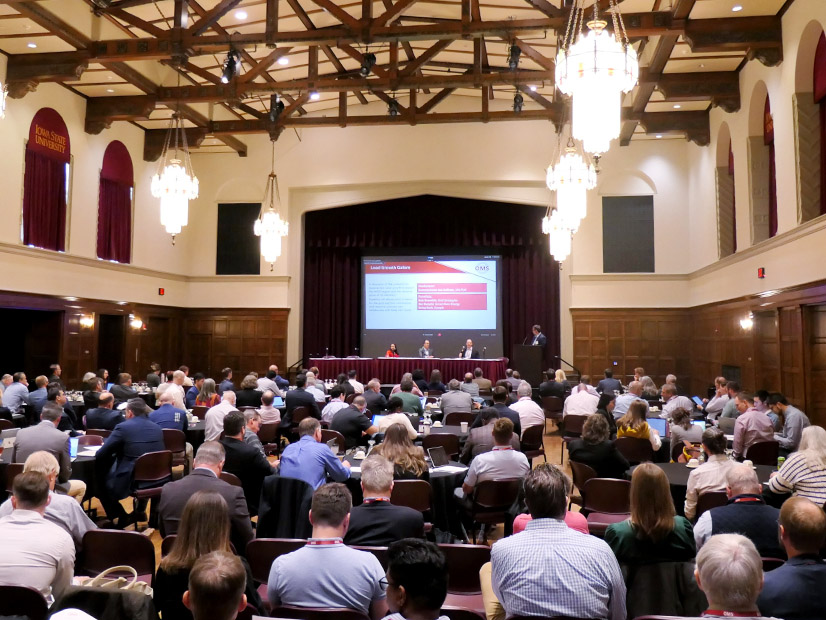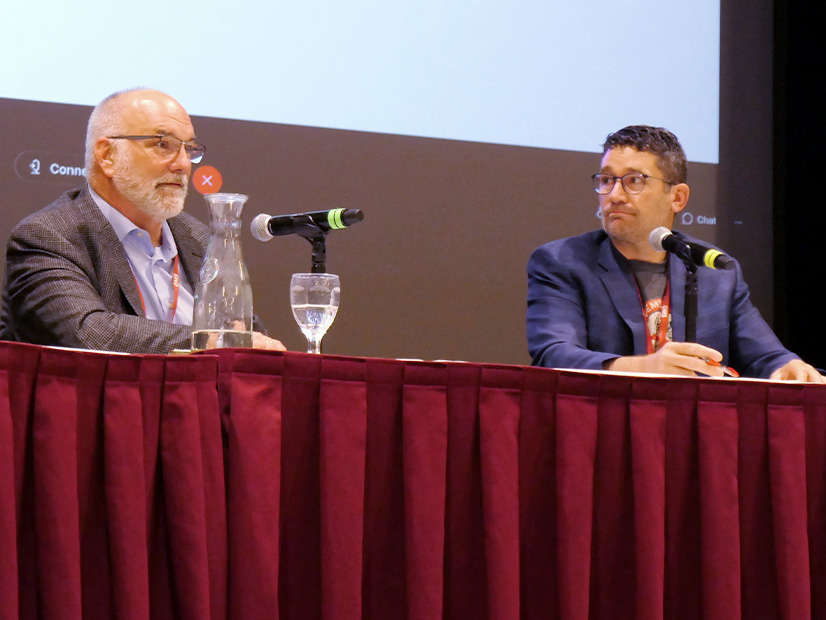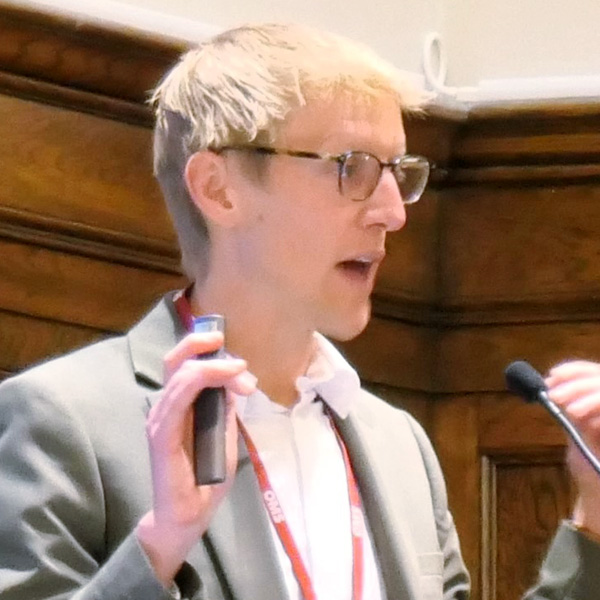AMES, Iowa — There’s no going back on waning capacity in MISO, panelists agreed this week at a gathering of state regulators, though predictions of escalating load growth have some skeptical.
New OMS Executive Director Tricia DeBleeckere opened the Organization of MISO States’ third annual Resource Adequacy Summit May 14-15 at Iowa State University, predicting that MISO will be managing a shallower supply for years to come.
“We’re going to have to live in this new world order of tight margins,” DeBleeckere said.
MISO President Clair Moeller agreed some capacity insufficiency within MISO is here to stay. He said it was unsurprising to MISO that one of the resource adequacy zones returned a shortage for the upcoming planning year. He said most zones were “right on the edge” of adequacy.
MISO’s capacity auction April 25 returned insufficient capacity for the upcoming fall and spring 2025 in Missouri’s Zone 5, where capacity prices hit a $719.81/MW-day limit, on par with building new generation. Otherwise, all local resource zones cleared at $30/MW-day in the summer, $15/MW-day in the fall, $0.75/MW-day in the winter and $34.10/MW-day in the spring. Zone 5 contains local balancing authorities Ameren Missouri and the city of Columbia, Mo.’s Water and Light Department. (See Missouri Zone Comes up Short in MISO’s 2nd Seasonal Capacity Auction, Prices Surpass $700/MW-day.)
Moeller defended his standing as a “storm crow” on resource adequacy.
“The reason it’s not bad is because I’ve been telling you all to worry about it,” he joked with regulators.
Former OMS Executive Director and Wisconsin Public Service Commissioner Marcus Hawkins said despite thinning reserves, MISO members are fortunate to operate under an established resource adequacy construct. Hawkins said parts of the country just now are trying to launch the “basic resource adequacy construct that’s been operating in MISO land since 2011.”
“Let’s be thankful that we have something in place,” Hawkins said. He added that MISO’s construct recently has substantially tweaked its resource adequacy rules, including introducing seasonal capacity auctions and a pending sloped demand curve in addition to an also-pending, all-encompassing resource accreditation based on past performance and forecasted availability during risky hours. (See Stakeholders Deliver Negative Reactions to Proposed MISO Capacity Accreditation at FERC; MISO’s Sloped Demand Curve Plan Draws 2nd Deficiency Letter.)
DeBleeckere said MISO’s recent and proposed modifications are “unheard of and groundbreaking” and probably the largest transformation of its resource adequacy construct ever.
Conflicting Views on Load Growth Volumes
Hawkins said that there’s a lot of buzz around booming load growth now, but he qualified that MISO at one time predicted as much as 12 GW of new demand that hasn’t materialized. He also said the footprint has lived through the “Groundhog Day” of MISO predicting major capacity shortfalls “three to five years from now for every year since 2015.”
Hawkins said despite dire estimates, MISO, utilities and states survived without catastrophe. He said there’s value in taking stock of predictions that didn’t pan out.
“We have to have these more nuanced conversations and be realistic about what has transpired after those predictions,” he said, prescribing “new, hard conversations on what is an appropriate level of risk to plan for.”
Hawkins said MISO’s and states’ plans will be reliant on one another’s information more than ever.
“Resource adequacy on paper is much different than serving load in operations. You can’t just feel good that you’ve hit your resource adequacy targets on paper,” Hawkins said.
Despite Hawkins’ plea for moderating expectations around load growth and capacity deficits, he was followed by a panel titled, “Load Growth Galore.”
Grid Strategies’ Rob Gramlich predicted the end of the country’s 25 years of flat load growth. He said Grid Strategies’ recent report shows Indiana and Michigan are especially ripe for new industrial load in MISO.
“Like many, we’ve gotten interested in load growth in the last six to nine months. It seems to be the biggest thing changing everything we thought we needed to do,” Gramlich said.
Gramlich said the nation is at an “inflection point” of new applications for data center servers occurring alongside the Biden administration’s push for stronger domestic manufacturing and the open question of hydrogen’s potential importance.
Gramlich said expanding load is evidenced in MISO by utilities’ requests for expedited project reviews, which have more than quadrupled since 2020. MISO’s expedited transmission project reviews are a bellwether of load growth, as they’re most often used to accommodate new load connections.
Gramlich said MISO is “already doing pretty well on forward-looking” transmission planning to connect new generation to serve load growth. He said the RTO likely is ahead of the curve on FERC’s newly issued Order 1920 concerning transmission planning. (See FERC Issues Transmission Rule Without ROFR Changes, Christie’s Vote.) However, he suggested MISO dedicate an internal group, or tap an independent entity or the Organization of MISO States, to contribute to load forecasting.
“We really as an industry have lost our muscle memory on load forecasting,” Gramlich said.
Google’s Betsy Beck said MISO should turn to “nontraditional data sources” and initiate discussions with large industrial customers in addition to compiling forecasts from their load-serving entities to more comprehensively view future demand.
Great River Energy Director of Resource Planning Zac Ruzycki urged utilities to have “open and honest discussions” with companies about the size, location and longevity of their new loads.
He said utilities and MISO may have to get comfortable with forecasting being “a lot more work” and more probabilistic going forward, given the confluence of sweeping changes.
Minnesota Public Utilities Commissioner Joe Sullivan said when he thinks about a hypothetical, 1-GW data center coming online in Minnesota, he can’t help but think that the new, daily load would be larger than the electricity ultimately produced from the state’s largest mining operation or refinery.
Ruzycki said it’s more likely than not that Great River Energy will be serving substantially more load within a decade.
“We feel fairly confident that’s going to be the case,” he said, adding that utilities are going to have to “do more with less” to serve larger loads with fewer baseload resources. Ruzycki said that’s why Great River is partnering with Form Energy to pilot a 1.5-MW long-duration iron-air battery capable of 100 hours of continuous dispatch.
Ruzycki said Great River Energy is building the battery — due online at its Cambridge peaking plant sometime next year — not to make money, but to see how the technology behaves.
Ruzycki said MISO’s mostly solar and wind interconnection queue means there are days ahead with curtailments due to “extreme production and low demand.” He said a long-duration battery can soak up excess generation from renewable generation over multiple days.
“Including new technology is challenging but necessary,” Ruzycki said.
MISO President Advocates for Restraint in Load Forecasting, Unit Retirements
But MISO President Clair Moeller cautioned that load growth might not ascend to the heights some are expecting.
“I’ve noticed when people are selling you something, they can be hyperbolic. So, how much of this is hyperbole and how much of it really is load growth?” he asked rhetorically. He also told attendees not to confuse “the interested public with the public interest.”
Lumpy load growth matters depending on location, Moeller said. He joked that he doesn’t care if a new data center eyes Ohio as its home base, but that same data center sited in Indiana might give him anxiety.
Moeller said utilities are in the unenviable position of balancing customers representing new load, customer affordability, shareholder interests and governor’s offices desiring economic development before another state can snap it up.
He said utilities, regulators and RTO planners should engage with economic development organizations and lawmakers “so everybody’s goals get on the table at the same time.” He said “a lack of coordination is risky” for the grid.
Moeller said the supply chain is the “governor” on how fast new load can be served and said the COVID-19 pandemic showed the “brittleness” of the supply chain.
“It’s two years to a data center and four years to a transformer,” Moeller said. “We’ve got to think this through in order to get a safe transition.”
Moeller said past transitions in the energy industry since 1900 have been “layered,” where new technologies were spread on top of operating older technologies.
“We didn’t turn anything off until we were well and done with it. Now, this transition is: ‘Turn stuff off and then turn stuff on,’” Moeller said.
He said MISO isn’t opposed to inverter-based resources but wants to make sure the technologies to support them for 24/7 output are tested. MISO sometimes is criticized as “pro-gas” by environmental groups, Moeller said, but added that he sees MISO as “pro-reliability.”
“Reducing the carbon footprint doesn’t have to mean turning off all the carbon-producing resources. It could mean make sure you use it only when you need it,” he said.
Moeller said in the past two years, the electrification of the economy is accelerating, data center load is swelling and manufacturing is reshoring.
“Now, what we’ve got to say, ‘Is that a wave or is that a trend?’”
Moeller also said robust transmission connections keep the lights on during 100-year events that are beginning to occur every other year. He said it’s unlikely any one grid operator can hold enough available generation to weather all storms.
However, Moeller implied there’s a transactional nature to imports and exports aided by transmission. He said that while MISO has supported TVA with exports — at one point during December 2022’s winter storm it was forced to stop to protect its own system — TVA never has returned the favor. Now, MISO isn’t inclined to lend a hand to TVA in future weather events because of that flow’s one-sidedness, Moeller said.
Moeller said MISO is meticulously drafting its second, $17 billion to $23 billion long-range transmission portfolio.
“The worst thing you can do is plan $20 billion in transmission and miss all the locations where the data centers want to be,” he said.






